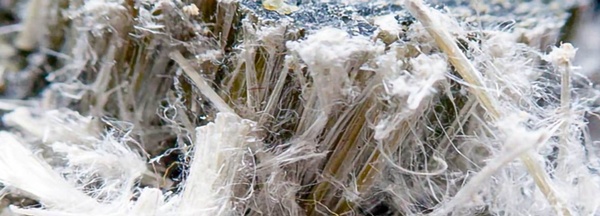Massachusetts Home Inspections YOUR INVESTMENT IS MY CONCERN

Asbestos - What Is It?

Asbestos refers to a group of naturally occurring minerals that form in bundles of fibers, which can be separated into thin threads. Known for their heat resistance, chemical durability, high tensile strength, and electrical resistance, these fibers were widely used for thermal and electrical insulation. Due to these properties, asbestos was commonly added to various building materials.
There are several types of commercial asbestos:
Chrysotile (White Asbestos) – The most commonly used type, accounting for about 99% of asbestos currently used in the United States.
Crocidolite (Blue Asbestos) – Known for its thin, needle-like fibers.
Amosite – Typically characterized by its brown fibers.
Anthophyllite – Usually found in shades of gray.
Asbestos fiber masses can easily break down into fine dust particles that become airborne and cling to clothing. When inhaled or swallowed, these fibers pose serious health risks. Asbestos-containing materials are classified into two categories: friable and non-friable. Friable materials can be crumbled into powder by hand pressure, making them more likely to release asbestos fibers into the air. These materials require strict control measures to prevent fiber exposure. Non-friable materials, on the other hand, are more stable and less likely to release fibers under normal conditions.
Here is what my clients have to say about my home inspection services:
Press F5 (on your keyboard) for additional testimonials
Dave had an impressive website that seemed to be too thorough to be anything but genuine. The thing that seemed to sell me was that he says right on his website that you may pay a little more for his service, but that his quality is higher. So I decided to give him a try even though I had no reference from another person hoping for someone of top quality. I was not disappointed. He was at the home early as promised and had done an inspection of the exterior and was writing up notes so that when I arrived, he walked me through the exterior first. Even with his early arrival, we were still there for about 3 hours looking through every little corner and cubby. He would occasionally stop and fill out his inspection forms which were easy to follow and read; he gives you a full folder of his notes that are well organized.
Dave was open to all questions and concerns so every time I saw something that was potentially concerning to me, he would look, give his opinion and often shared other experiences with similar circumstances. He also had a good sense of humor which helped to lighten what can be a stressful experience (having someone pointing out problem items that you didn't see). I would highly recommend Massachusetts Home Inspections.
Michael














